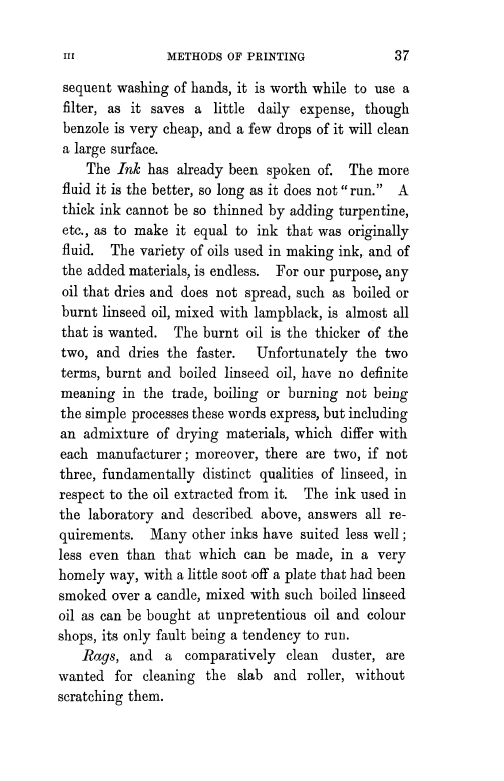| ||||||

OCR Rendition - approximate
III METHODS OF PRINTING 37 sequent washing of hands, it is worth while to use a filter, as it saves a little daily expense, though benzole is very cheap, and a few drops of it .will clean a large surface. The Ink has already been spoken of. The more fluid it is the better, so long as it does not "run." A thick ink cannot be so thinned by adding turpentine, etc., as to make it equal to ink that was originally fluid. The variety of oils used in making ink,, and of the added materials, is endless. For our purpose, any oil that dries and does not spread, such as boiled or burnt linseed oil, mixed with lampblack, is almost all that is wanted. The burnt oil is the thicker of the two, and dries the faster. Unfortunately the two terms, burnt and boiled linseed oil, have no definite meaning in the trade, boiling or burning not being the simple processes these words express, but including an admixture of drying materials, which differ with each manufacturer ; moreover, there are two, if not three, fundamentally distinct qualities of linseed, in respect to the oil extracted from it. The ink used in the laboratory and described above, answers all requirements. Many other inks have suited less well ; less even than that which can be made, in a very homely way, with a little soot off a plate that had been smoked over a candle, mixed with such boiled linseed oil as can be bought at unpretentious oil and colour shops, its only fault being a tendency to run. Rags, and a comparatively clean duster, are wanted for cleaning the slab and roller, without scratching them.
|